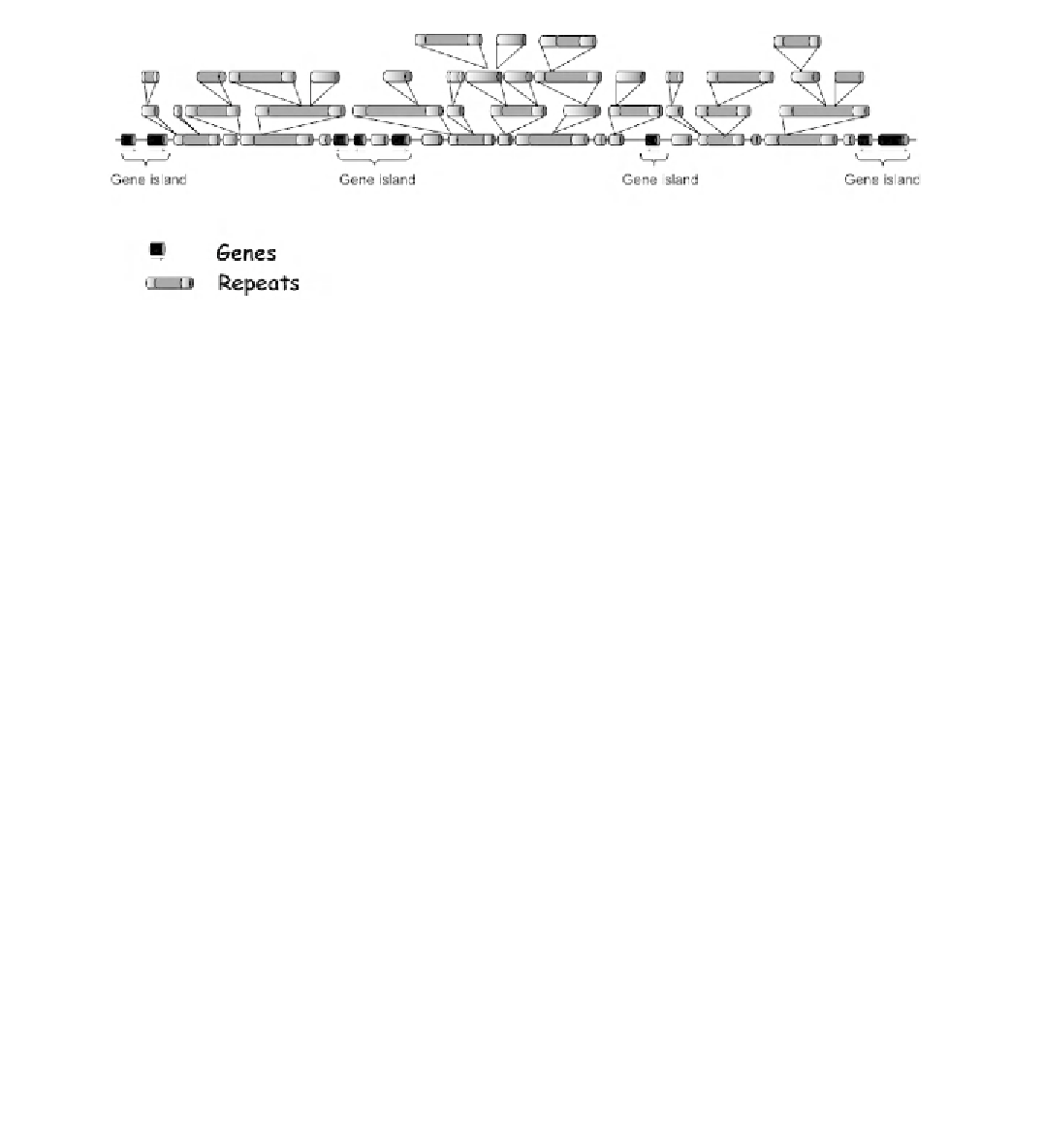Agriculture Reference
In-Depth Information
Fig. 15.4
Schematic representation of the organization of genes and repeats in the wheat genome. Genes are shown in
black with an arrow, repeats in grey. Repeats consist mainly of LTR retrotransposons that are inserted in one another in a
nested fashion.
hand, it is also possible that insertions into genes
are generally selected against because of reduced
fi tness caused by the insertion. In wheat, as in
other plant species, most retrotransposons are less
than 6 million years old. Insertion times can be
dated by analyzing the amount of nucleotide vari-
ation that differentiates the two LTRs of a ret-
rotransposon, which are identical at the time of
insertion (SanMiguel et al., 1998). Because most
retrotransposons identifi ed in the wheat genome
have amplifi ed in recent times, their particular
location in the genome is rarely conserved even
between closely related
Triticum
species that are
estimated to have diverged less than 3 MYA
(SanMiguel et al., 2002; Wicker et al., 2003b; Gu
et al., 2004). The most likely reason for the
absence of or lack of recognition of older elements
is that these tend to erode over time, mostly
through a process called illegitimate recombina-
tion (Devos et al., 2002; Wicker et al., 2003b).
Other elements that are found in the intergenic
regions are non-LTR retrotransposons and
CACTA elements (Wicker et al., 2003b; Kong
et al., 2004), which are DNA transposons that
contain terminal inverted repeats that terminate
in the motif CACTA. Many CACTA elements, a
number of which have been found to be associ-
ated with genes, have undergone deletions and do
not carry a functional transposase, which makes
them diffi cult to identify (Wicker et al., 2003a).
Nevertheless, CACTA elements have been shown
to be high-copy elements and are the second
largest group of transposable elements in the
wheat genome (Li et al., 2004).
Evolution of the wheat genome
The increase in gene density from centromere to
telomere invokes the question of whether this
gradient is caused by an effective increase in the
number of genes in the distal versus proximal
chromosome regions or a differential insertion
and/or removal of retrotransposons in different
chromosome regions. Akhunov and colleagues
addressed the fi rst part of this question by exam-
ining genes that were detected at paralogous loci
on different chromosomes or in different bins of
the same chromosome (Akhunov et al., 2003b).
The likely ancestral locus was identifi ed by
examining which of the wheat paralogues had
an orthologue in rice that fi ts the pattern of
known wheat-rice syntenic relationships. This
study revealed that the majority of the duplicated
loci were located in the distal chromosome
regions and that their distribution was positively
correlated with recombination rates (Akhunov
et al., 2003b). Interestingly, gene-deletion
rates were also signifi cantly higher in the high-
recombinant regions than in the low-recombinant
regions (Dvorak and Akhunov 2005), suggesting
that recombination has a mechanistic role in
both duplication and deletion. Recombination




